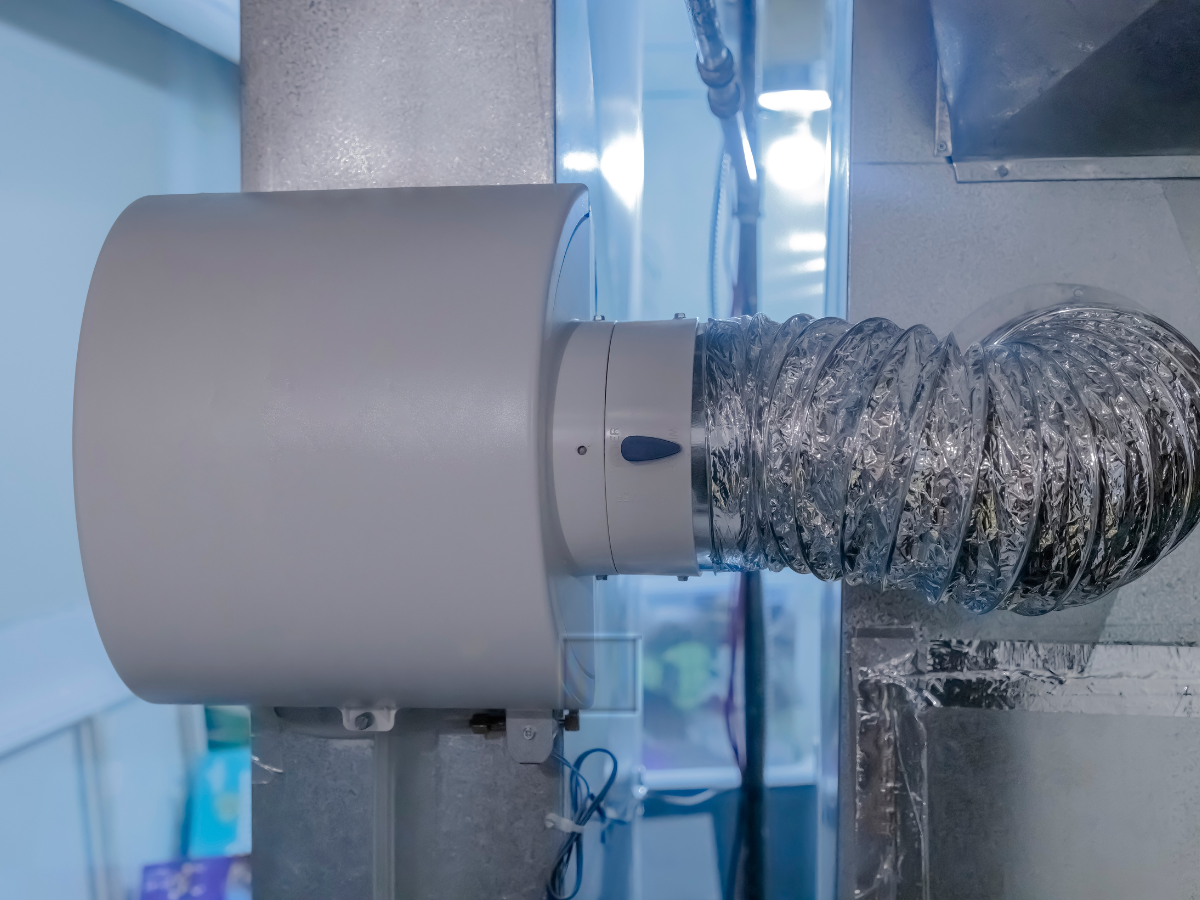When the cold winter months roll in and the weather outside looks frightful, it’s not just the frosty weather outside you need to worry about – the indoor air can become dry and uncomfortable, too.
This is where adding a humidifier to your furnace can make a huge difference. It helps your house maintain balanced humidity levels, providing you with a warm and cozy space.
In this article, we’ll guide you through seven fast and easy steps to integrate a humidifier with your furnace system, helping you achieve optimal indoor comfort during the coldest times of the year.
Remember, at Anderson Air, we’re committed to keeping your home environment perfect, no matter the season. Call us if you need help.
Impacts of furnaces and heating systems on your health
During the winter, the outdoor air is cold and dry. This drop in humidity is only worsened by furnace and heating systems, particularly those without built-in humidifiers.
When your furnace heats up the cold winter air, it dries it out in the process. This dry air then circulates throughout your home, leading to a variety of negative effects ranging from dry skin and respiratory issues to potential damage to your furniture and household items.
As your furnace heats your home, it can also contribute to a less comfy, less healthy indoor environment. To avoid this, it’s important to take steps to keep your indoor humidity at a safe level.
By integrating your humidifier directly into your furnace, you never have to worry about forgetting to turn it on; the systems are attached and operate synchronously.
Why add a humidifier to your furnace? Benefits of humidity control
Adding a humidifier to your heating system is a great investment that can significantly enhance your quality of life.
One of the key benefits is health-related. By maintaining optimal humidity levels, a humidifier prevents dry skin, alleviating issues such as itching and flaking. The additional moisture in the air can also reduce dry throat and nasal passages, making breathing easier for individuals who suffer from asthma or allergies.
Aside from health benefits, your home itself will be grateful for the addition. Dry air can affect your wooden furniture, causing it to crack or warp. A humidifier can help preserve your assets.
Lastly, humidifiers can boost your energy efficiency. Air typically feels warmer at higher humidity levels, meaning you can lower your thermostat settings without compromising comfort – sounds like significant energy savings!
How to install a humidifier
Adding a humidifier to your furnace isn’t complicated, but it does take some know-how. While you can attempt to do this yourself, we would recommend hiring a professional (like one of our technicians) to do the job for you.
Here’s how our installation process works:
- First things first, take a look at the manufacturer’s instructions. It’s important to read these carefully so we’re all set for the next few steps.
- Now, let’s play it safe. We’re going to switch off the power to your furnace before we get things rolling to avoid injury to you and damage to your system.
- Next, we need to find the perfect home for our humidifier. Let’s choose a spot that’s easy to get to for when we need to do a bit of maintenance or upkeep.
- With the spot picked, it’s time to connect your new humidifier to the water supply. We’ll use the plumbing components that came with it and follow the manufacturer’s instructions to the letter.
- Alright, time to secure our humidifier to the furnace. We’ll use the mounting hardware recommended by the manufacturer for a snug fit.
- We’re nearly there! Now, let’s connect the humidistat (the device that’s like the thermostat and controls the humidifier based on the detected humidity levels in your home) to the humidifier. We’ll pick a central location for it so we can keep precise control of humidity levels.
- Almost done! Now, we’ll give your humidifier a test run to ensure everything is in tip-top shape. We want to ensure it operates just as it should, delivering optimal performance for your home comfort.
The best way to ensure your system is working properly is to have it professionally installed.
Common challenges with humidifier installation
- Plumbing Connection Leaks: If connections aren’t tightened properly or aren’t the right size, it can cause leaks. This not only wastes water but can also cause damage to your home and system.
- Electrical Connections: Faulty wiring, loose connections, or using the wrong voltage cause electrical malfunctions and fire hazards. Make sure all electrical connections are secure and comply with the necessary safety standards.
- Mounting Issues: Failure to secure the unit can lead to malfunction, noise issues, or even damage to the unit and your home. Also, be sure it is installed so it’s easily accessible for maintenance and refilling.
- Humidistat Calibration: The humidistat controls your humidifier by responding to the indoor humidity levels and switching it on and off when needed. If it’s incorrectly calibrated, however, your humidifier might run when not needed. Keep your unit calibrated and efficient with regular checks.
A DIY job is more likely to cause the above issues. To avoid experiencing any of these problems, give us a call. Our expert technicians have the right tools and knowledge to get your new unit situated and working the way it should.
Types of Furnace-Compatible Humidifiers
Here are a few different types of humidifiers you can add to your furnace system:
- Whole-House Humidifier: Integrated into your HVAC system for full-home humidity control. Whole-house systems boast high efficiency and low maintenance but are more complex and costly to install.
- Bypass Humidifiers: These use warm air from the furnace to create and distribute a warm mist in your home. They are energy-efficient and cost-effective, but they require a bypass duct, and use more water.
- Steam Humidifiers: Just like the name suggests, these boil water, releasing the steam into your ductwork. They offer high humidity control and can kill airborne pathogens. However, these also use more electricity and require frequent maintenance.
- Portable Humidifiers: Standalone units that can be moved around. They’re inexpensive and easy to install, but they cover a limited area since they’re not connected to your furnace. They need to be refilled and cleaned often.
Anderson Air is your trusted provider for all things HVAC and air care. Give us a call for a personalized recommendation on which humidification system to choose.
What to consider when picking a humidifier for your home
When choosing a humidifier for your home, consider these factors:
- Size: Match your system to the square footage of your space and your furnace’s size to avoid inadequate or excessive humidity levels.
- Capacity: Customers in drier climates should opt for a higher capacity humidifier for continuous operation, especially in drier climates or during winter.
- Compatibility: Choose a humidifier that fits your living environment and lifestyle, such as models with safety features or portable ones for frequent travelers.
- Cost: Consider your budget. Balance the unit’s upfront price with ongoing/operational maintenance, and energy consumption costs to make a budget-friendly decision.
- Installation Requirements: Understand if your chosen humidifier requires professional installation to prevent unexpected costs and inconveniences. Factor this into your budget as well.
Conclusion
Humidity isn’t just important for your comfort; it’s crucial to your health and the health of your appliances. A furnace humidifier is a simple, effective solution to dry air during the winter time.
For help on your installation or to learn more about furnace humidifier systems, contact or call Anderson Air today! Our team is committed to caring for your air.




